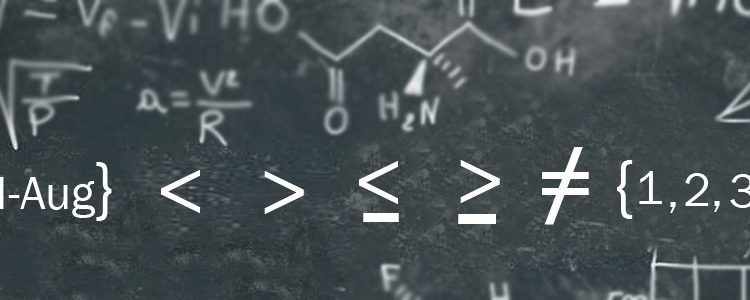Reporting Number and Date Ranges

Reporting number ranges accurately is critical to the explanation of one’s research methods and analysis. Furthermore, date ranges representing the study period are commonly reported as part of the Methods section. In addition to reporting all numbers and dates accurately, it is important to be aware of how to word English sentences to clearly indicate where a number or date range stops and ends, and what is included.
Do Not Repeat or Leave Out Numbers
Be sure not to place a number in two categories or leave out the number entirely. For example, consider that the participants in a study are going to be divided into age brackets for the purpose of analysis. They may be categorized into a “young adult group” aged 20–39 years, a “middle-aged group” aged 40–59 years, and a “senior group” aged 60 and above. In such cases, it is important not to have the same number in two places or ranges. Do not place 40-year-olds in two groups by saying that the young adult group consists of 20–40-year-olds and the middle-aged group consists of 40–60-year-olds. This is confusing, as it counts participants who are exactly 40 years old twice.
Moreover, do not forget to account for any numbers. If the study included participants aged 18–65, the categories 20–39, 40–59, and 60+ do not account for the 18- and 19-year-old participants. Hence, the first age bracket can be revised to 18–39. Another common error is to write a phrase like “over age 60” to represent the senior group. However, this phrase leaves out participants who are exactly 60 years old; see the final section for further explanation.
Between vs. From … To
Prepositions are important. The phrases “between” and “from … to” carry different meanings when used to describe number or date ranges. “Between” does not include the two elements at the start and the end; for example, there is exactly one whole number between 1 and 3, which is 2.
This quickly becomes relevant in the Methods section of a paper. Consider sentence (1) below:
- “The data were collected between June and August.”
In a strict reading of this sentence, the data were collected only in July. This is because July is the only month in between June and August. The information, then, is confusing and unclear. Readers will wonder why the author has not simply said “in July.” If the intention is to report that the data were collected over all three months, it would be much clearer to use “from … to” instead.
The phrase “from … to” includes the two elements at the start and end; for example, there are three numbers in the range from 1 to 3; they are 1, 2, and 3. Likewise, sentence (2) below tells readers that the data were collected in June, July, and August.
- “The data were collected from June to August.”
Over vs. And over
There is an important difference between “over age 60” and “60 and over.” The first phrase, “over age 60,” does not include 60. This is because 60 is not over 60; rather, 60 is equal to 60. Thus, the category begins at age 61.
However, the second phrase, “60 and over,” includes 60 and all ages above it.
Similarly, consider the phrases “under” and “and under.”
(3) All children under age 10 must come to the movie with a parent.
The rule in the sentence (3) applies to children aged 0–9. Ten-year-olds are not under 10; they are 10. In contrast, sentence (4) applies to children aged 0–10.
(4) All children age 10 and under must come to the movie with a parent.
The word “or” is often used in place of “and” in such phrases. That is, one can write “participants aged 60 or over” or “children age 10 or under” without any change in the meaning.









